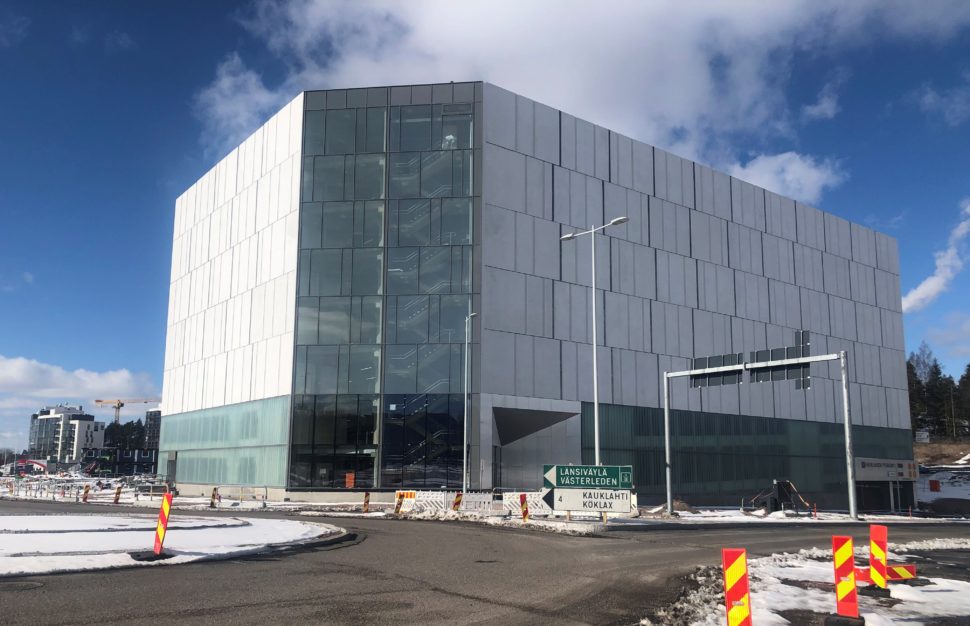The metro will start operating to Kivenlahti in Espoo on Saturday 3 December. The new section of line is seven kilometers long, with five new stations: Finnoo, Kaitaa, Soukka, Espoonlahti and Kivenlahti.
Once the new stations are operational, there will be 30 metro stations in total. The metro network in Helsinki and Espoo is now 43 kilometers long.
The metro was extended from Ruoholahti to Matinkylä with eight new stations in 2017, when the first phase of the West Metro was completed. Since then, the works have continued to the west of Matinkylä.
– The timelines and costs of the construction of the metro extension were kept in line with the decisions of the Espoo City Council, says Olli Isotalo, the Deputy Mayor for Urban Environment, the Chairman of the Board of Länsimetro.
– Even though the metro starts operating, construction continues around the stations. In the existing areas of Kaitaa, Soukka, Espoonlahti and Kivenlahti development will be concentrated around the stations and services will improve. A completely new residential area will be created in Finnoo, continues Isotalo.
– The metro is now complete. The work of decades is coming to an end, although work to develop the metro will continue. The metro is the most popular mode of public transport: 93 percent of our customers gives the metro a good or very good rating. The environmentally friendly metro has a revolutionary impact on people’s mobility in its area, and it is also very important for the vitality of the capital region and Finland as a whole, says HSL Executive Director Mika Nykänen.
There will be no changes to feeder bus services when the new section of line opens. The metro will run in parallel with the current services for a few months. New bus routes aligned with the new section of metro line will be introduced in early 2023. The final date will be announced later.
The new metro timetables as well as bus routes and timetables will be available on the HSL Journey Planner well before the changes take effect.
The city grows with the metro line
Even though the metro runs underground in Espoo, its impacts are also felt above the ground.
The metro extension brings with it plenty of new opportunities, such as new services, apartments and jobs, thus increasing the vitality of the city. With the metro, a completely new neighborhood, Finnoo, is being created and the attractiveness of existing developments increases. The metro zone in Espoo has a growth potential of 70,000 new residents and potential for a 100 percent increase in the number of jobs by 2050.
– The metro supports the city’s network-like structure of five city centers and sustainable urban development. Compact centers are built next to and on top of the metro line, with areas dominated by detached houses around them, explains the Mayor of Espoo, Jukka Mäkelä.
— The growth corridor of the West Metro is also crucial for the competitiveness of Espoo and Finland as a whole, and significantly promotes cooperation between companies, universities and cities, continues Mäkelä.
Western Espoo along the new section of the metro line has the biggest growth potential for public transport in the HSL area.
Frequent service and safe journeys
The metro is operated by the Metropolitan Area Transport Ltd, which is also responsible for property maintenance and system supervision on the entire metro line.
– Metropolitan Area Transport Ltd and our 150 metro drivers are ready for the extension of metro services. We have prepared for the launch of services through various preparatory works. In addition to driver training and test runs, we have worked to ensure the operability of the section of line and that all technical control systems function properly when the services start. The metro is one of the most important parts of our operations. Its safety and reliability are a matter of honor to us, says the acting CEO of the Metropolitan Area Transport Ltd Antti Nousiainen.
Stations display architectural prowess
The Matinkylä–Kivenlahti section of the West Metro was completed in September. The construction project met all the the objectives set for it, such as objectives related to scheduling, costs, risks, quality, cooperation and occupational safety. After construction, Länsimetro Oy will be the owner of the tracks, stations and the metro system from Ruoholahti westwards, as well as responsible for their maintenance and development.
– The West Metro stations are architecturally attractive, Finnish architectural expertise at its best, and the unique stations serve as business cards for the areas. We eagerly look forward to welcoming passengers to the new metro stations and to enjoy the benefits of this fast mode of public transport safely, says the CEO of Länsimetro Oy Ville Saksi
The City of Espoo website: www.espoo.fi
Helsinki Region Transport website: www.hsl.fi
Metropliran Area Transport Ltd website: www.kaupunkiliikenne.fi
Länsimetro Oy website: www.lansimetro.fi
More information:
Espoo, Deputy Mayor for Urban Environment Olli Isotalo, +358 50 593 3359, olli.isotalo@espoo.fi
HSL, Executive Director Mika Nykänen, tel. +358 9 4766 4040
Länsimetro Oy, CEO Ville Saksi, tel +358 40 823 2086
Metropolitan Area Transport Ltd, Head of Unit Antti Nousiainen, tel. +358 40 579 6074



